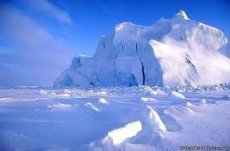New publications
Climatologists: Arctic will be ice-free in summer by 2100
Last reviewed: 30.06.2025

All iLive content is medically reviewed or fact checked to ensure as much factual accuracy as possible.
We have strict sourcing guidelines and only link to reputable media sites, academic research institutions and, whenever possible, medically peer reviewed studies. Note that the numbers in parentheses ([1], [2], etc.) are clickable links to these studies.
If you feel that any of our content is inaccurate, out-of-date, or otherwise questionable, please select it and press Ctrl + Enter.

The Arctic - a mosaic of seas, glaciers and the northern edges of continents - is a place most of us will never see. And for most of us, when we think of the Arctic, one thing comes to mind: ice.
However, the existence of sea ice in the Arctic is changing dramatically, and its presence will no longer be something to take for granted very soon, in our lifetime.
According to an international team of researchers, the Fourth Report (2007) of the Intergovernmental Panel on Climate Change (IPCC) incorrectly estimated trends in Arctic sea ice thinning and drift, and in some cases significantly underestimated them. The document states that the Arctic will be ice-free in summer by 2100. Pierre Rampal of the Massachusetts Institute of Technology (USA) and his colleagues believe that this will happen several decades earlier.
The IPCC, created by the UN in 1988, aims to average out many conclusions. It is sometimes criticised for predicting according to the “lowest common denominator” of climate research. And now, after comparing IPCC models with actual data, scientists have concluded that Arctic sea ice is thinning on average four times faster than the report says and drifting twice as fast.
Part of the failure may be due to inadequate modeling of the mechanical forces acting on and within the ice in the Arctic basin. IPCC models focus heavily on temperature variations, but winds and currents are just as important. They turn the ice into a “dough,” and this mass of small pieces behaves differently from normal ice.
Mechanical forces play a particularly significant role in the winter, when the ice practically does not melt. Previously, at this time, the main part of the Arctic Ocean was covered with a thick layer of ice. Today, this ice is thinner, and under the influence of winds and currents, it breaks up into "ice ensembles", that is, it no longer represents a monolithic mass. Summer warming leads to further disintegration. Scientists call such ice floe groupings pancakes because of their rounded shape.
In both winter and summer, this ice tends to escape the Arctic Basin, most often through the Fram Strait, a wide stretch of water between Greenland and the Svalbard archipelago. The smaller the floe, the more likely it is to pass through the strait and melt in warmer waters.
But there is also a counter-trend that can counteract ice loss. For example, large cracks in the winter ice sheet can help create new ice as very cold air comes into contact with the liquid ocean and freezes it.
These conflicting trends make predicting the future of Arctic sea ice extremely difficult. More careful modeling and direct observations are needed, especially of mechanical forces and other phenomena that are poorly understood. Researchers at MIT and NASA’s Jet Propulsion Laboratory are working to combine models and observations.
The IPCC itself, it should be noted, admitted that its 2007 report was too rosy. Shortly after its publication, the group's chairman, Rajendra Pachauri, warned: "Things are going to get worse and worse."

 [
[